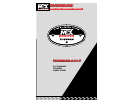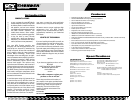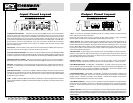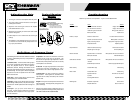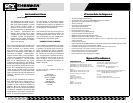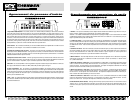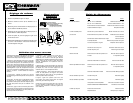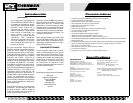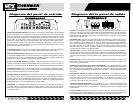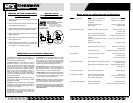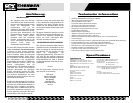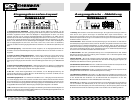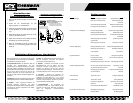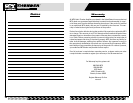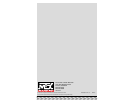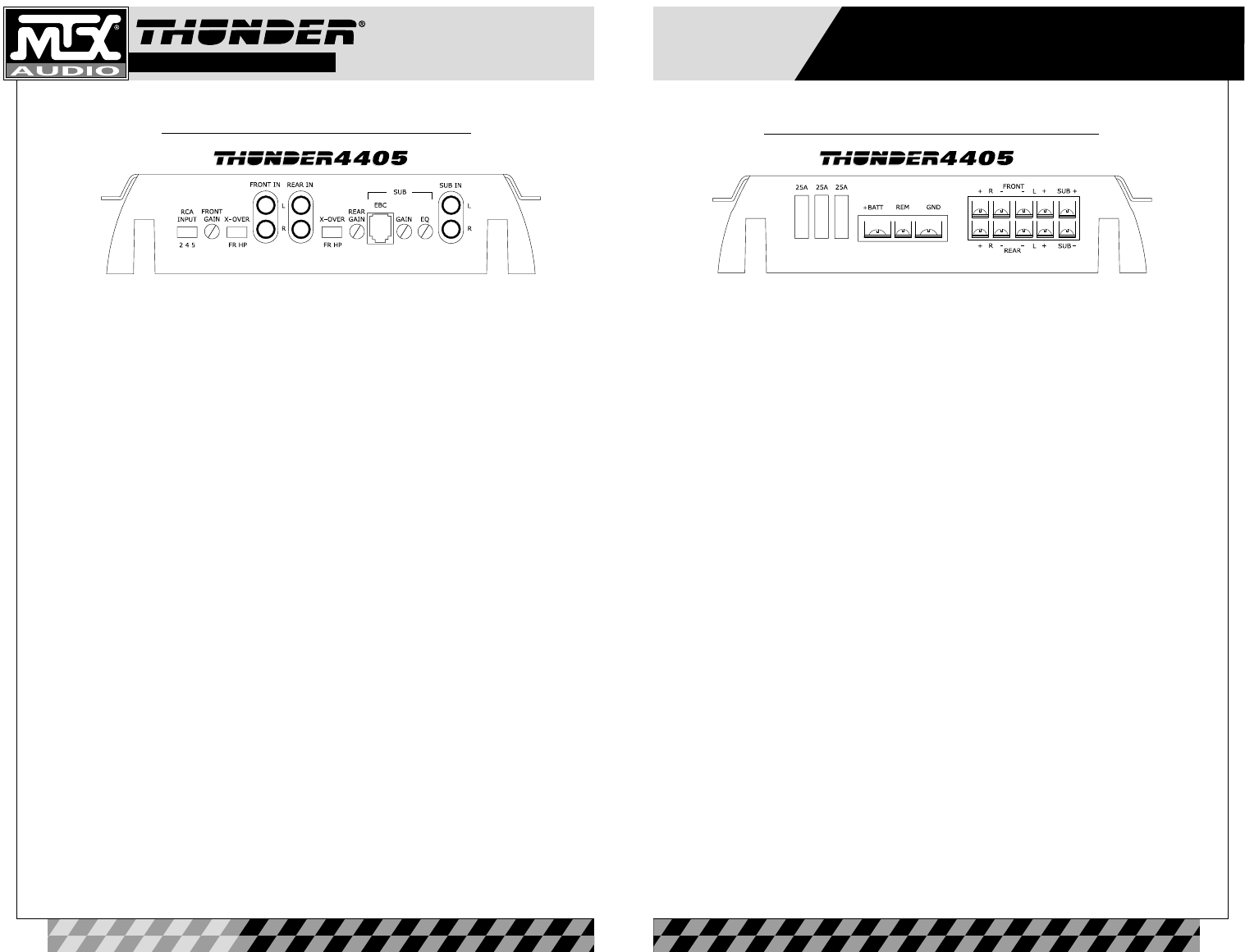
AMPLIFIERS
4
5
1. Input Select 2CH / 4CH / 5CH – This switch, found on the Thunder4405, is used to match the amplifier’s
input to the source unit’s output so all five channels of the amplifier are driven. If your source unit has 2
outputs (a left and right) connect them to the amplifier’s front channel inputs, and place the input select
switch in the 2CH position. If your source unit has 4 outputs, (left front, left rear, and right front, right rear)
connect them to the amplifier inputs and place the input select switch in the 4CH postion. In the 4CH posi-
tion, the fader on your source unit will operate. If your source unit has 5 or 6 outputs, (left front, left rear,
right front, right rear and subwoofer) connect them to the amplifier inputs and place the input select
switch in the 5CH postion.
2. Gain Control – These controls are used to match the input sensitivity of the amplifier position to the par-
ticular source unit that you are using. The controls are factory set to 1Vrms.
3. Crossover Control Front and Rear – This switch turns the internal electronic high pass 18dB/Octave 85Hz
crossovers on and off. If the switch is selecting HP, the crossover is on. When the switch is selects FR, the
crossover is bypassed for a full range output. (Subwoofer is a fixed low pass 18dB/Octave 85Hz crossover)
4. RCA Input Jacks Front and Rear – RCA or type input jacks for use with source units that have RCA or
Line Level Outputs. A source unit with a minimum output level of 200mV is required for proper operation.
5. Bass EQ – This equalization circuit is used to enhance the low frequency response of the vehicle’s inte-
rior. With up to 18 dB of boost and centered at 40Hz, the Bass EQ can be adjusted to meet your own per-
sonal taste.
6. RCA Input Jacks (Sub) – L + R inputs are supplied to simplify installation. The left and right inputs sum
internally to form a single monaural channel. The left and right inputs are electronically isolated and will
not affect the isolation of the other four channels. A source unit with a minimum output level of 200mV
is required for proper operation.
7. EBC – The EBC, or Electronic Bass Control, allows a remote bass control to be adjusted from the driver’s
seat. If the optional EBC is installed, the bass level will be able to be adjusted to overcome noise and other
interference.
Input Panel Layout
❶
❹
❺
❻
❷
❸
❼
❷
❹
❸
❷
1. Fuses
–
For convenience, all amplifiers utilize ATC type fuses. For continued protection in the event that a fuse
blows, replace the fuse only with the same value.
Caution: The power fuses on the amp are for protecting the amp against overdrive. To protect the vehicle’s
electrical system, an additional fuse is required within 18" of the battery on the 12V+ cable.
2. Power Terminal – This is the main power input for the amplifier and must be connected directly to the
positive terminal of the car battery for the amplifier to operate properly. See the chart below for recom-
mended cable sizes for each amplifier. Use caution when running this cable through the car. Try to avoid
the input RCA cables, antenna cabling, or other sensitive equipment as the large amount of current flow-
ing through this cable can induce noise into your system. It is also very important to have a tight connec-
tion to ensure maximum performance.
3. Ground Terminal – A good quality ground is required for your Thunder Amplifier to operate at peak per-
formance. A short length of cable the same gauge as your power cable should be used to attach the
ground terminal directly to the chassis of the car. Always scrape or sand any painted surfaces to expose
bare metal where the ground wire will attach.
4. Remote Terminal – All Thunder Amplifiers can be turned on by applying 12 volts to this terminal.
Typically this voltage is supplied by a wire from the source unit marked “remote” or “electric antenna”.
5. Term Block Right Channel
– The Right Rear + and Right Rear – terminals connect the right rear speak-
er to the right rear channel of the amplifier. Connect the + terminal of the speaker to the Right Rear + ter-
minal of the amplifier and the – terminal of the speaker to the Right Rear – terminal of the amplifier. 2 ohm
minimum impedance is allowed. Operation the same for front channels.
6. Term Block Left Channel
– The Left Rear + and Left Rear – terminals connect the left rear speaker to the
left rear channel of the amplifier. Connect the + terminal of the speaker to the left Rear + terminal of the
amplifier and the – terminal of the speaker to the left Rear – terminal of the amplifier. 2 ohm minimum
impedance is allowed. Operation the same for front channels.
7. Term Block Sub Channel
– The sub + and sub - terminals connect the subwoofer to the dedicated sub-
woofer channel of the amplifier. Connect the + terminal of the speaker to the sub + terminal of the ampli-
fier and the – terminal of the speaker to the sub – terminal of the amplifier. 2 ohm minimum impedance is
allowed.
8. Speaker Terminals – As shown in the wiring diagrams, be sure to observe speaker polarity through the
system. Failing to wire the speakers in proper phase could result in a loss of bass response and/or poor
overall sound quality. Caution: Thunder amplifiers are not recommended for loads below 2 ohms stereo or
4 ohms bridged.
Output Panel Layout
❶
❹
❺
❻
❷
❸
❼



